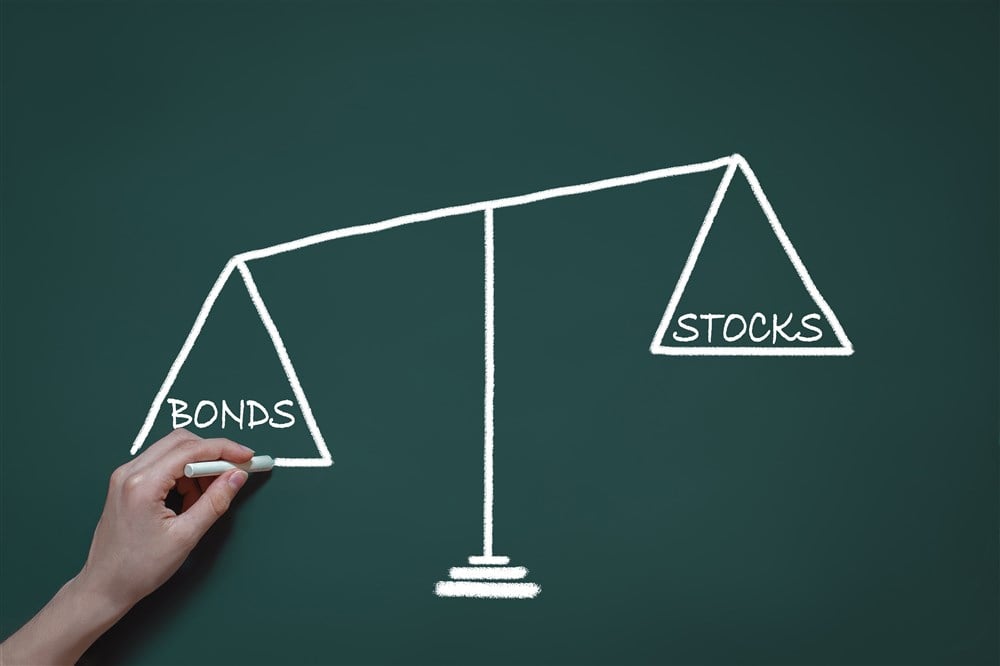
For decades, the financial services industry has steadfastly recommended that most investors use a simple portfolio mix of 60% stocks and 40% bonds.
There was a good reason for that advice: The 60/40 portfolio worked.
Since the 60/40 portfolio was developed in 1961, its average annual return has been over 9%. Since 1995 its return has been even higher.
In mid-2020, the 60/40 worked as well as it was supposed to. Investors who held on through the early Covid market decline saw a fast rebound to a bull market, while long-term Treasuries fell to record lows.
For example, if you owned a 60% stake in the SPDR S&P 500 ETF Trust (NYSEARCA: SPY) and a 40% stake in the iShares 7-10 Year Treasury Bond ETF (NYSEARCA: IEF), it would have returned about 15% three years ago.
Unique circumstances boosted portfolio value
But don't forget the unique circumstances that existed during this time: Federal debt had climbed to over $21 trillion in 2020, while interest rates were zero, where they would remain until 2022. That combination of factors meant investors in stocks and Treasuries were holding a golden ticket.
Yields on government bonds tend to fall as federal debt rises due to increased demand for safe assets, central bank policies and the use of deficit spending to stimulate the economy. These factors collectively drive bond prices up and yields down.
At its heart, the 60/40 is supposed to work like this: When stocks fall, bonds rise, and vice versa. While bonds don't generate the same return as stocks, they serve a role in dampening the volatility of stocks and partially offsetting stocks' losses in a down market.
However, a period of higher inflation and interest rates, which many analysts believe is possible, could put a lid on the returns of stocks while bond yields rise.
Benefits of tilting toward leaders
One critique of the 60/40 portfolio is its lack of flexibility, but that's not necessarily true. For example, it's possible to tilt your equity holding more toward growth stocks like Nvidia Corp. (NASDAQ: NVDA), Microsoft Corp. (NASDAQ: MSFT) and Meta Platforms Inc. (NASDAQ: META) when that asset class is trading higher, and tilt toward value when that's in favor.
If your equity blend is focused on what's strong at the moment, you can potentially juice up the return of the equity portion.
However, a valid critique of the 60/40 is that many portfolios hold underperforming assets year in and year out.
For example, the iShares MSCI EAFE ETF (NYSEARCA: EFA), which tracks an index of large- and mid-cap developed market stocks, excluding the U.S. and Canada, has underperformed the SPY ETF over the past 15 years.
Clinging to underperforming stocks
Nonetheless, many investors, including institutions, have continued owning international stocks. While the efficient market hypothesis maintains, accurately, that it's impossible to know with certainty when any asset class will rotate back into leadership, it's also true that continuing to hold underperforming assets drags down return.
Rather than stubbornly stick with out-of-favor assets, why not tilt toward current market conditions?
For example, in the past three months, that would have meant a tilt toward energy. If you'd owned the Energy Select Sector SPDR Fund (NYSEARCA: XLE), you'd own not only the largest energy stock, Exxon Mobil Corp. (NYSE: XOM), which is up 3.25% during that time but also Marathon Petroleum Corp. (NYSE: MPC), up 13.59%, Diamondback Energy Inc. (NASDAQ: FANG), up 11.54% and Pioneer Natural Resources (NYSE: PXD), up 10.21%.
On a three-month basis, energy is the only S&P sector trading higher.
Focus on stocks in rally mode
However, in times of a prolonged equity market downturn, such as in 2022, a tactical strategy, even within the 60/40 portfolio, could have stemmed losses. For example, a greater focus on energy stocks and even the Utilities Select Sector SPDR Fund (NYSEARCA: XLU), which managed a tiny return of 1.42% in 2022, would have offset losses elsewhere.
According to asset manager Vanguard, the typical 60/40 blend declined by about 16% in 2022.
Energy and utilities stocks were the only S&P 500 gainers last year, while one common fixed-income benchmark, the iShares Core U.S. Aggregate Bond ETF (NYSEARCA: AGG), was down 13.02%, meaning the average 60/40 investor faced a loss. Even with a focus on better-performing stocks, the loss would have been stemmed.






